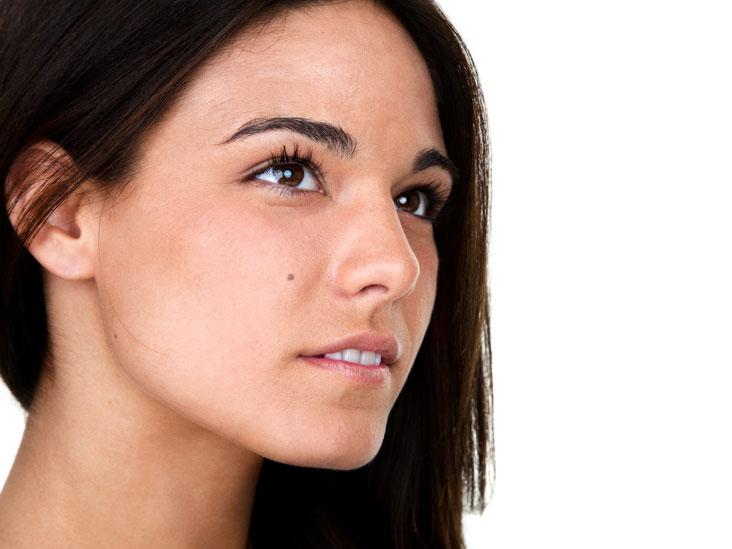
Melasma is a common condition of the skin which looks as brown to gray-brown patches on the face, often the cheeks, connection of the nose, forehead, face, and over top of the lip. It may appear on the rest of your body which are confronted with sun often and for long periods of time, such as the forearms and the neck.
One of the very common therapies for melasma is sun safety – using a sunscreen every day and reapplying it every two hours when outdoors. Aesthetic dermatologists guide wearing a broad-brimmed hat as effectively; sunscreen alone might not provide enough protection.
More than 90 percent of the people suffering from melasma are female. It’s therefore common in pregnancy that it has even been named the “mask of pregnancy.” Hormones, particularly estrogens, seem to trigger melasma.
Who is affected?
People with naturally richer skin tend to be more vulnerable to get melasma, including folks of Latin/Hispanic, North African-american, African-American, Asian, Indian, Middle-Eastern and Mediterranean descent. In people in which some members are known to truly have the problem, other family members tend to be more apt to be suffering from it as well.
Causes of Melasma
The causes of melasma isn’t completely clear Boca laser resurfacing. According to the American School of Dermatology (AAD), it’s potential that the pigment-producing cells in skin, named melanocytes make too much pigment. Individuals of color tend to be more vulnerable to melasma – their melanocytes tend to be more productive than these of individuals with lighter skin.
Popular melasma sparks include:
- Sun exposure: Uv (UV) light from sunlight stimulates the melanocytes. A tiny amount of exposure can cause melasma to reappear after it has light with treatment. Melasma is more common and more apparent through the summer. Sun exposure is the reason why many people have a recurrence or many recurrences of melasma.
- Changes in hormones: Melasma is quite common in pregnancy, in which it’s then named chloasma, or the mask of pregnancy. Birth control supplements and hormone replacement drugs also can trigger the condition.
- Cosmetics: Epidermis maintenance systems that worsen skin might stimulate the skin’s melanocytes and make melasma.
- Heat: Heat has been shown to worsen melasma. Many chefs or people who tend to be surrounding by heat are apt to have hard to take care of melasma. For this reason a broad-spectrum sunscreen is important for treatment, including infrared, or heat, protection.
Signs and symptoms
Melasma doesn’t trigger signs – meaning that it does not affect the individual’s sensation or physical perceptions. It may and does, nevertheless, trigger distress and psychological disturbance by its appearance.
Signs include brown or gray-brown patches on the face. These patches typically appear on the:
- Cheeks
- Forehead
- Bridge of the nose
- Over top of the lip
- Chin
It is perhaps not common, however, many people get the patches on the forearms or neck.
Diagnosis
Aesthetic dermatologists can diagnose melasma by simply looking at the skin. A Wood’s light is a system that a cosmetic dermatologist might sparkle on skin to observe how profoundly the melasma penetrates the skin.
Rarely, melasma can look like yet another skin condition. To definitively determine the diagnosis, your cosmetic dermatologist might need to eliminate a tiny piece of skin for examination below magnification. The task is called a biopsy, and is normally performed safely and easily in the medical practitioner’office.
Treatment
Melasma might fade without treatment, once the problem which induced the melasma is reversed, such as pregnancy or the utilization of dental contraceptives. The condition might increase once the child is sent or birth control supplements are discontinued.
For a lot of, melasma stays for decades, even a lifetime. There is number role for laser treatment. Melasma therapies can be found, including:
- Sunscreen: This really is the main treatment for sunscreen. A broad selection sunscreen, including both UVA and UVB safety, and ideally infrared safety, is recommended. Sunscreen must be reapplied every two hours, even although the individual isn’t going to the beach or external much. Speak to your dermatologist about the most effective sunscreen selection for you.
- Hydroquinone: This can be a common preliminary treatment for melasma. The treatment, for relevant (surface of the skin) application, is formulated as a gel, gel, or treatment, which functions lightening the skin. Many of these can be found over-the-counter without a prescription, but you will find items that your cosmetic dermatologist can prescribe which include a greater focus of hydroquinone.
- Tretinoin and corticosteroids: Sometimes of those drugs might be encouraged for use with hydroxyquinone. You can find items which contain all three drugs: hydroquinone, tretinoin, and a corticosteroid. It could be named a multiple cream.
- Other relevant drugs: Your cosmetic dermatologist might prescribe azelaic p or kojic p to enhance lightening of the melasma patches.
- Procedures: If relevant drugs do not achieve adequate benefits, a procedure might become more effective. These could include a light compound peel, dermabrasion, or microdermabrasion. The less infection to skin the better.
Side effects
Some unwanted effects that may occur with any of these drugs and/or procedures include skin discomfort, darkening of skin, and others. Call your cosmetic dermatologist if you experience vexation or area effects.
Results
Melasma is persistent. Your absolute best opportunity for success is to truly have the care of a cosmetic dermatologist, subsequent her instructions exactly. However, it could take months to see improvement. The dermatologist may be sure that you get the most take advantage of treatment, with small area effects. Once you have reached the most effective benefits possible, the medical practitioner might guide you to keep managing your skin. Such treatment is called preservation treatment; it can help prevent melasma from recurring. Work with a sunscreen (broad-spectrum), reapply, and when external, a broad/brimmed hat to restrict the likelihood of a recurrence.
Stay informed, Stay ahead and stay inspired with Beauty & Makeup Blog
